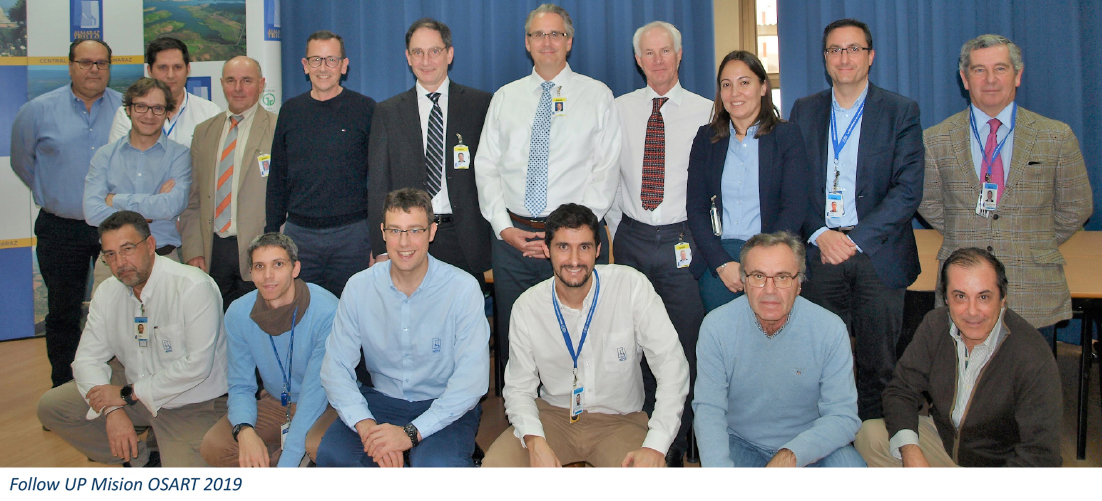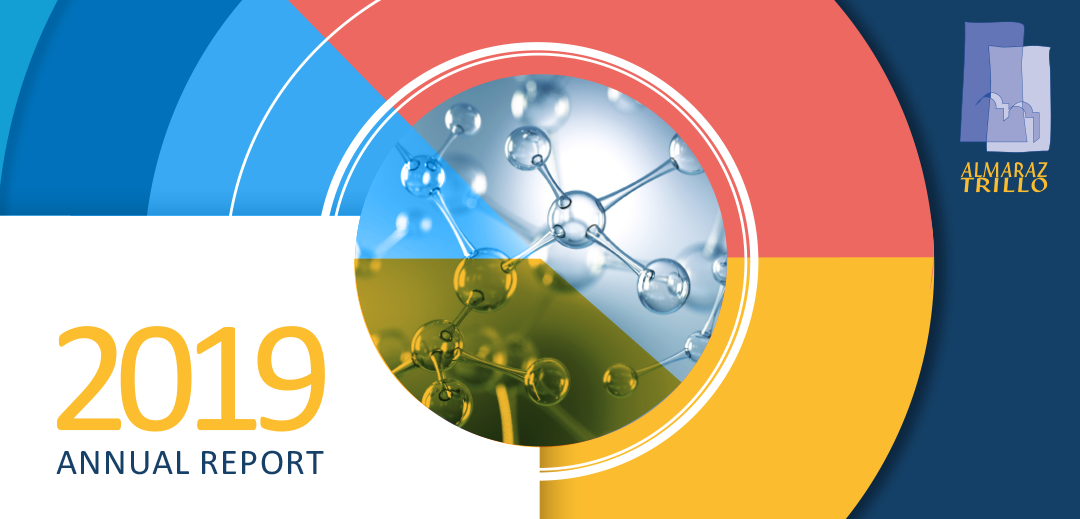

OPERATIONS
Almaraz plant
During 2019, gross production of electrical energy generated by the Almaraz nuclear power plant was 16,966.110 GWh, and net production was 16,326 GWh. The gross electricity production for Unit I was 8,983.989 GWh, and 7,982.121 GWh for Unit II. Almaraz Power Plant had a cumulative gross electric power production of 545,637.014 GWh (275,246.513 at UI and 270,390.501 at UII).
Unit I has been operating stably throughout the year, except for three periods of power reduction, one in August to repair the MSR-C expansion joint, another in October to overhaul valve FW1-1PP-01B, and in December at the request of Load Dispatcher for flexible operation. Unit II has also maintained stable operation achieving its best historical record for days coupled to the electricity grid: 512 days and refuelling 25 and general maintenance was performed between 7 October and 13 November.
The Almaraz Nuclear Power Plant held the annual Internal Emergency Plan (IEP) drill on 26 September. During this year the Almaraz Nuclear Power Plant has reported a total of 8 events, none requiring one-hour notification to the Regulatory Body.
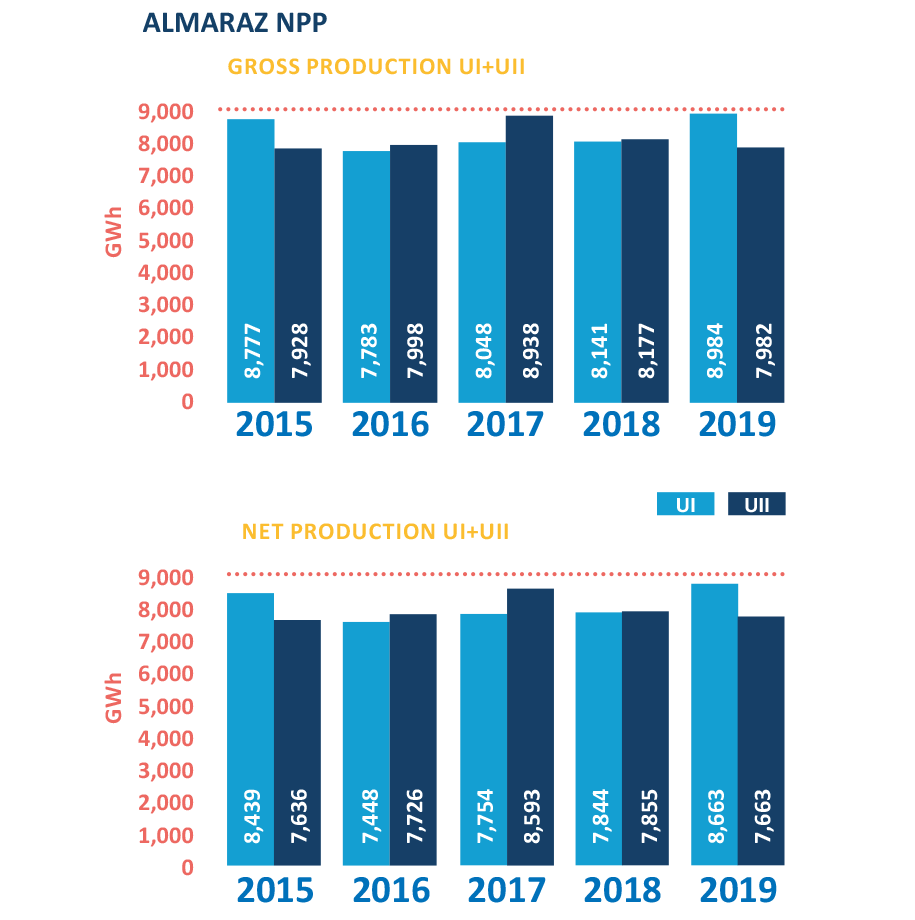

Trillo plant
During 2019, the Trillo nuclear power plant has generated 8,456,356 GWh gross electrical energy, 2.2% more than the previous period, 7,905,283 net electrical energy. Since start-up, its gross electrical energy production is 255,748,648 GWh and it has accumulated 12 consecutive years without automatic reactor shut-downs.
The Trillo unit has operated stably throughout the year, and the thirty-first annual refuelling and general maintenance took place between 10 May and 9 June. In December, it carried out a power reduction on notification by the Load Dispatcher.
In 2019, the Trillo Nuclear Power Plant reported a total of three Notifiable Events to the NSC. The Trillo Nuclear Power Plant held the annual Internal Emergency Plan (IEP) drill on 27 June.
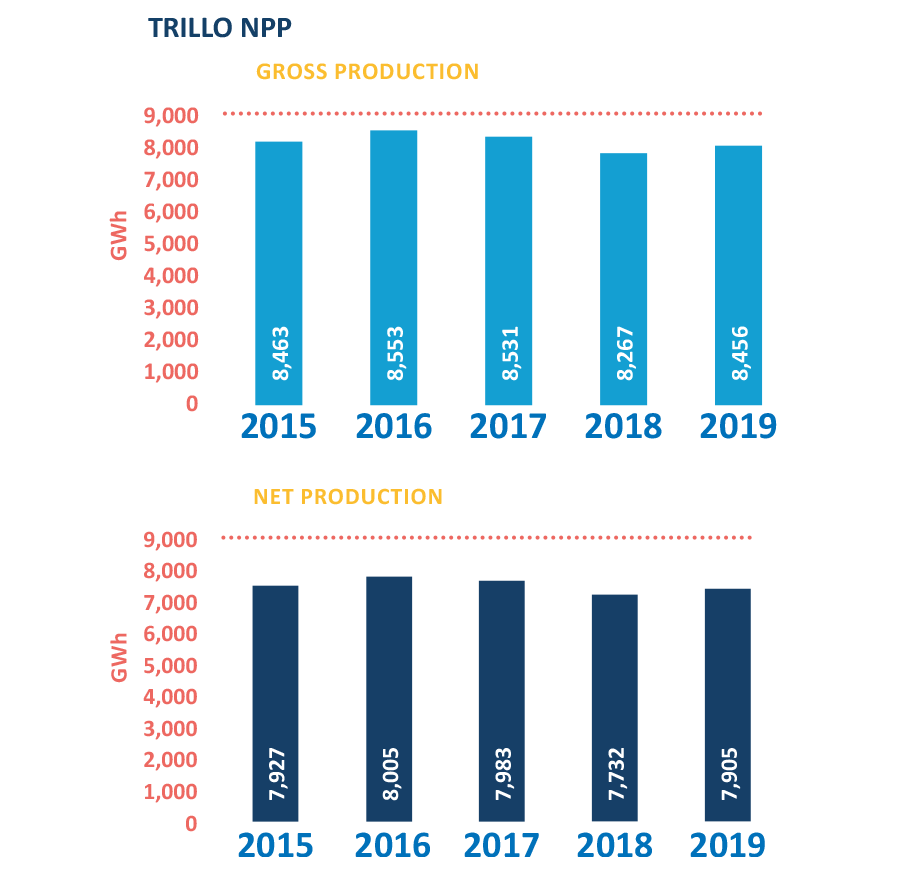

REFUELLING OUTAGES
Almaraz plant
Refuelling number 25 of Unit II was performed between 7 October and 13 November, in which 1,200 workers from 70 service companies participated to execute over 10,200 activities and 34 Design Modifications. The most important projects included inspection of cold branch nozzles of the vessel and 33% of the steam generator tubes, replacement of pressure safety valves and the purge heat exchanger of the steam generators. In addition, a major overhaul of the alternator, turbines and water pumps of the auxiliary feed water and main feed water “A” was carried out. An off-site power supply test was carried out from the José María Oriol Hydraulic Power Plant and modification of the closing and opening control circuit of the components cooling system valves through voltage recovery.
Trillo plant
The thirty-first refuelling and general maintenance of the Trillo Plant began on 10 May and ended on 9 June. During these 30 days, the services of over forty specialised companies were used, employing over a thousand additional people to the usual staff of the installation to carry out the tasks in question. Key activities carried out included replacing 40 fuel elements, inspecting the lower bearing and seals in a main pump, replacing two fingers of internal nuclear instrumentation, capacity test in 3/7 redundancy batteries, electrical and mechanical inspection of redundancy. 2/6 and the cleaning and sanitation of one of the essential services pools.

RADIOLOGICAL SAFETY AND PROTECTION
During 2019 the installations operated completely normally, without producing any significant incidents affecting nuclear safety or radiological protection, neither to employees, nor the environments of the plants.
In the case of Almaraz, the staff collective dose totalled 471.31 mSv per person for the combination of the two units, and at the Trillo Plant, the dose totalled 179.03 mSv per person. The results obtained from the measurements performed show the dose rate for professionally exposed personnel was once again well below legal limits.
TECHNOLOGICAL UPDATING
During 2019, CNAT continued its investment plan to improve safety as part of the process that has been implemented over recent years, as well as maintaining plant availability by renewing obsolescent equipment. The following actions were performed as part of the renovation plan due to obsolescence:
Almaraz nuclear power plant
• During 2019, the modification to increase the availability of the ultrasonic feed water temperature measurement system (UTM) was designed, as a continuation of the renovation of the “Crossflow” system, also facilitating the elimination of continuous noise. As part of the modification, use of the RTD measurement is also validated to perform the thermal power calculation with an uncertainty within 1%.
• Renewal of I&C instruments based on their qualified life,
• Improvements have been started in the chemical product storage systems (hydrazine, ammonia, sulphuric and soda tanks) to adapt them to the regulations. These improvements will continue throughout 2020.
• The activities regarding obsolescence include purchase of SMB actuators to replace the existing SMA actuators. This project, launched in late 2018, is structured in two phases, the first phase with planned implementation during R127 and R226 (2020-2021).
• To improve demineralised water production capacities, and as part of a pilot project, a new water treatment system based on EDI (electrodeionization) technology has been acquired to replace the existing physiochemical demineralisation chain (resins recombiners). The commissioning of this system is planned for the 1st half of 2020.
• The project has been initiated to replace the existing filtration units of the controlled area access building, so that they fully comply with current regulations. Implementation is planned for the second half of 2020.<
• Implementation and commissioning of the new cooling units in the Switch Room and Control Room, both for U-1 and U-2, has been completed. The new units use a new refrigerant gas which has no adverse effect on the ozone layer.
Trillo nuclear power plant
• The replacement programme for the METRON switches type Novomax G30 and Otomax P2C continued, using ABB EMAX switches, with a programme covering the replacement of 99 actuators during the 2015-2023 period. This programme includes 660V upstream breakers and 660V, 380V, 220Vdc and 48 Vdc consumer breakers.
• Replacement of recorders, cards and programmable controllers employing Siemens S5 technology with the latest Siemens S7 technology.
• Development of the H&B actuators modernisation project, having begun qualification of the Nuclear Safety actuators.
• Increase of the stock of I&C cards.
• Awarded renewal of the decontamination system control for equipment related to the primary TU-50 pumps.
• Renewal of the pressure shower control units.
• As part of the actions for obsolescence and the equipment renewal plan, a project to modernise the voltage regulation and power stabilisation systems of the plant’s main generator has been initiated. The main equipment supply has been awarded, and the design will be developed throughout 2020 for implementation during the R433 refuelling (2021).
• Ongoing renovation of the site installations for the 15 kV medium voltage ring.
• Initiated to replace the Generation Switch during the R434 refuelling (2022) due to obsolescence of the existing Switch and as part of the Equipment Renewal Plan. The process of evaluating bids for to supply the equipment is in progress.
• The purchase of pumps for the UF, RS, UT and RN systems, affected by obsolescence, has been initiated.
• For reasons of improved reliability, a new TA system changer has been purchased, and its implementation is planned for the 2021 refuelling.
• The strategic plan to renew the Diesel generators (safeguards and emergency motors and alternators) has been initiated, with a view to operating until the end of the plant’s life. Scheduled maintenance runs until 2032 and includes the major maintenance to be performed on the equipment, with the necessary spare parts, to requalify them for the new period.
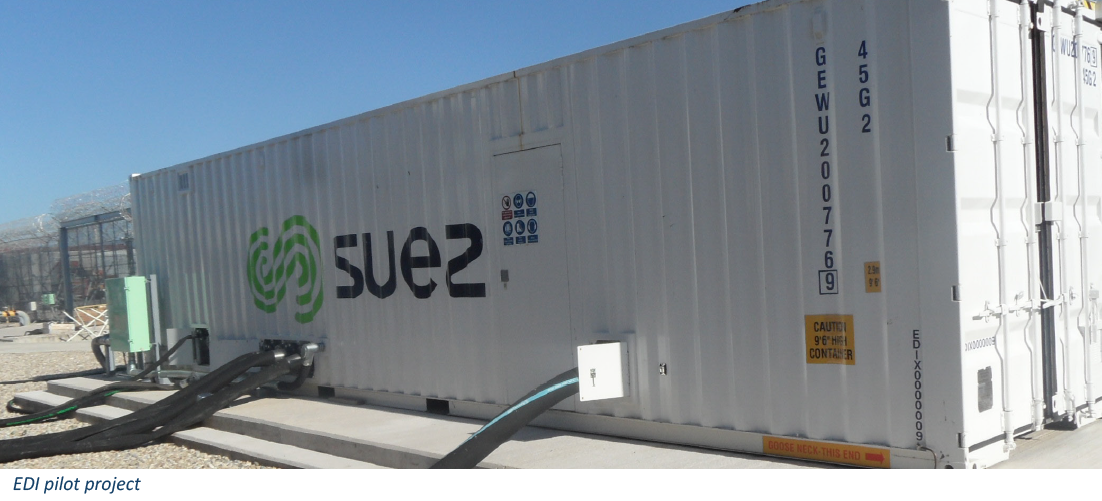
Activities associated with safety improvements include the following:
ALMARAZ NUCLEAR PLANT
• In 2019, preliminary studies were launched to develop the improvement proposals included in the RPS related to Renewal of the Production Authorisation for Almaraz NPP. These include improvements to increase the margin available in the CC system (new changer cleaning system, replacement of coolers for the RH and CS pumps), new passive seals for the primary pumps, a new permanent sealing ring for the cavity and replacement of ventilation unit serpentine coils. TRILLO NUCLEAR PLANT
• In 2019 and as part of the actions for the transition to the fire protection regulations (NFPA 805), design modifications were implemented including the following: installation of passive protections in electrical pipes, RF180 separation walls between pumps, installation of RF180 doors, and improvements in the indication of the activation of the of Diesel generator and essential pump extinguishing systems). The remainder of the actions will extend through 2021.
• Activities related to the NSC Technical Instruction have continued, following guide NEI 09-10, concerning the prevention and management of gas accumulation in pipelines. Modifications have been made during refuelling, within phase 1 with an implementation period 2019-2021. BOTH PLANTS
• Activities for compliance with ITC-14 for the Production Authorisation, include initiating the design and acquisition of new gates for the TL system, and implementation is planned for the 2020 refuelling.
• At Trillo NPP during 2019 the Containment detection system was optimised, and is the sectorisation of fire areas of the rooftop of the building where the safeguards Diesel is located is planned for 2020, which will finalise the changes required to comply with IS-30 Rev.2 issued by the NSC.
Related to installation of the new containment filtering and venting system (SVFC) at both plants, that enables containment to be vented in a controlled manner at pressures around the design pressure following an accident beyond the design bases of the plant, all the actions to commission the equipment to take samples during refuelling have been completed.
In compliance with the schedule agreed with the NSC, and after a cycle of supervision, the automatic actions generated by the detection and protection system against an open phase condition (OPC) have been successfully enabled (within Trillo and Almaraz Unit II) for the power transformers of the off-site network. Almaraz Unit I is planned to be enabled during R127 (2020) after a supervision cycle.
With respect to the management and storage of spent fuel and after approval by MINETAD of Rev.4 of the ENSA Safety Study for the new ENUN32P container, authorisation has been received from MINETAD for start-up and fuel loading in both plants. After the first loading in 2018 of one ENUN 32 P container at Almaraz and two ENUN 32P containers at Trillo, this activity continued in 2019, with the additional loading of one ENUN 32P container at Almaraz. In 2020, in accordance with the established schedule, it is planned to continue loading ENUN 32P containers at both plants.
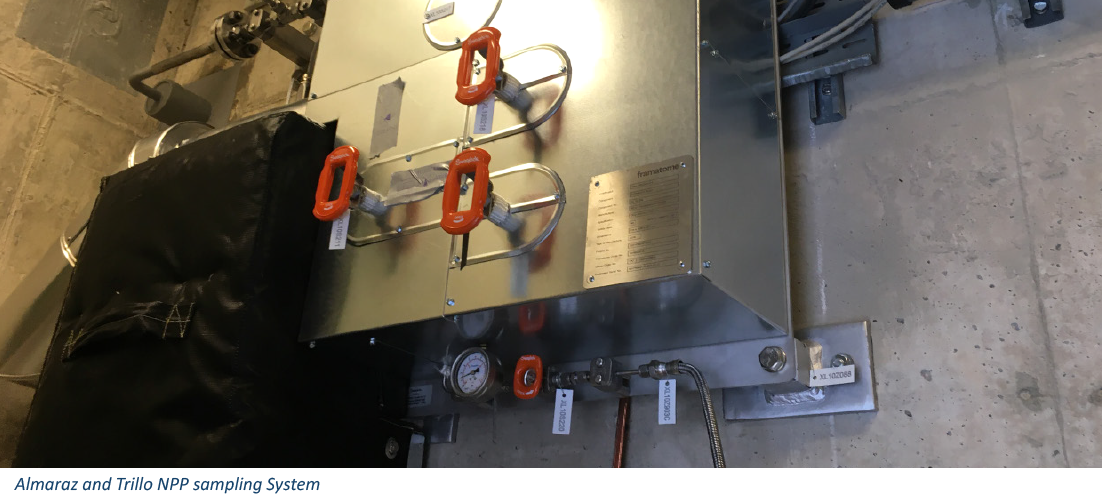
QUALITY
Quality is intrinsic to all activities at CNAT and provides the main source of confidence for our owners, the social environment, employees and business partners. Since 1995, CNAT’s commitment to quality has been recognised by the Spanish Association for Standardisation (AENOR) by the award of an official certificate, which certifies compliance of our Quality Management System with the UNE EN ISO 9001 standard for the production of electricity from nuclear sources. In 2019 AENOR carried out a certification renewal audit with satisfactory results. In addition, we comply with the reference quality standard in the nuclear sector, UNE 73401 Quality Assurance at nuclear installations, which is the basis of our Quality Assurance Manual, and the requirements are continuously audited by the Nuclear Safety Council (NSC).

Voluntary international evaluations were also requested to determine the degree of excellence of the organisation. These included the WANO Peer Review (World Association of Nuclear Operators), independent evaluation by a group of international experts, and in November 2019 the Follow-up of the Peer Review performed in 2017 was carried out at Trillo, with very satisfactory overall results.
Also, there was a Follow-up of the 2018 OSART mission by the International Atomic Energy Organisation (IAEA) in November 2019 at Almaraz NPP. During OSART missions, a group of experts from the IAEA carry out in-depth reviews of the performance of the nuclear power plant in terms of safety (Operational Safety Review Teams) and to do so they analyse the factors that affect safety management and staff performance. The results of tracking the recommendations proposed in 2018 have been very positive, with Almaraz NPP being assessed above the international average.
Continuous Improvement is part of CNAT’s organisational culture and that is why we manage annually about 5,000 corrective and improvement actions, which originate not only from independent internal evaluations (Quality Assurance audits and inspections and Nuclear Supervision actions), but also from activity and process self-assessments by the units themselves of their activities and processes. In addition, trend analyses of low-level incidents are conducted to enable preventive actions to be identified to avoid incidents of greater severity.
